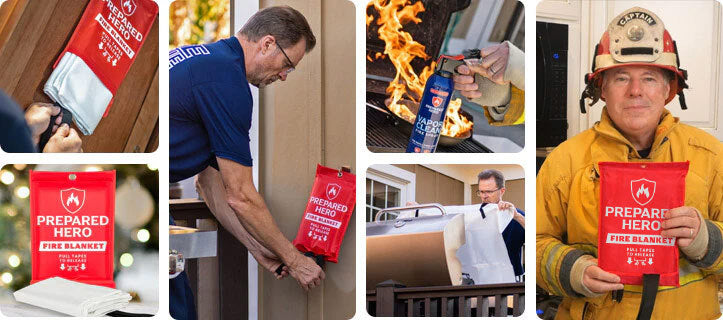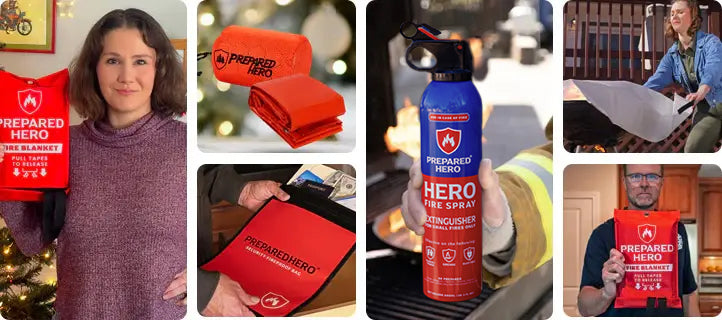Where you put your smoke detectors matters just as much as installing them. Proper placement makes sure they can detect...
Smoke detectors are crucial for keeping us safe when a fire occurs. But what happens when they start beeping even if there’s no danger? Those frustrating beeps in the middle of the night or a quiet afternoon can be a headache.
Understanding how to stop your smoke detector from beeping is more than just the noise. It’s also about making sure your smoke alarms work. Whether it's a low battery, dust buildup, or a more serious issue, knowing how to troubleshoot ensures your smoke detector remains reliable.
In this guide, we’ll explain why smoke detectors beep and how to stop them from beeping without fire. We’ll also give tips on how to take care of your smoke alarm.
Why Your Smoke Detector Beeps

First things first: you have to understand why smoke detectors beep. The last thing you want is to ignore an alarm that could be trying to tell you something important, especially when every second counts. Here are the common reasons why smoke detectors beep:
Fire
If your smoke detector makes a loud, continuous sound, it's usually warning you about a fire nearby. Always check for signs of a fire, especially if you’re not cooking or using any heat sources. Even if there’s no visible smoke or flame, the alarm could still detect something potentially dangerous. Don’t assume it’s a false alarm until you make sure there’s no real danger.
Dust
Over time, dust and debris can build up inside the smoke detector, especially in the sensing chamber. This buildup can block the sensors, which causes the smoke detector to beep. It’s easy to overlook, but smoke detectors need regular cleaning. Cleaning your smoke detector at least twice a year prevents unnecessary beeping and ensures it works. It’s a small task that can save you a lot of hassle.
Improperly Installed Battery
An improperly installed battery that’s not in contact with the terminals causes the smoke detector to beep. Even though it looks like the battery is in place, it’s worth double-checking to make sure it’s properly installed. Sometimes, the battery drawer doesn’t close or the pull tab hasn’t been removed. If you’ve recently changed the battery and it’s still beeping, check if everything’s in its proper place.
Environmental Factors
Your smoke detector might also beep due to environmental factors. For one, constant exposure to sunlight can affect the sensor’s readings. Extreme heat or cold can also throw it off. For example, if your detector is near a space heater or window that gets a lot of sun, it might think there’s an issue when there isn’t. Moving the alarm to a shaded spot or away from heat sources could solve the problem and keep things quiet.
Tripped Circuit Breaker
A tripped circuit breaker can make your smoke detector beep. A hard-wired smoke detector connected to your home’s electrical system might beep when the breaker is tripped or there's a power surge. If the breaker has tripped, simply flip it back on. If that doesn’t stop the beeping, the problem lies somewhere else. Find out the exact reasons why your hard-wired smoke detector is beeping here.
Residual Charge from a Previous Battery
Your smoke might sometimes beep after replacing the battery. This can happen because of the residual charge left over from the old battery. Many modern smoke detectors have backup batteries that keep them running when the power goes out. But when the old battery is removed, some energy may stay in the system. To fix this, simply reset your smoke detector. This drains any remaining charge and stops the beeping.
Old Alarm
Like any electronic device, smoke detectors wear out over time. Old smoke detectors usually have malfunctioning sensors or other internal issues. When a smoke detector reaches the end of its life, it beeps to let you know it’s done. Smoke detectors last for up to 10 years. Once yours goes beyond this period, replace it as soon as possible.
What Smoke Detector Beeps Mean

Effectively stopping a smoke detector from beeping involves knowing what the beeps mean. Smoke alarms beep to communicate different things, depending on how they’re made. Here’s what those noises usually mean:
Three Beeps
Your smoke detector might beep three times if its sensor is malfunctioning. It might be damaged, dirty, or worn out. Your smoke detector might also beep because of a low battery. This is your smoke alarm reminding you to replace it soon. In addition, excessive dust can cause your fire detector to beep three times.
Continuous Beeps
This beeping pattern usually means that your smoke alarm has detected smoke. If you have a single alarm, the smoke is probably nearby. But if you have interconnected detectors, the smoke could be near any of them.
Irregular Beeps
Irregular beeping might mean that fluctuating temperatures are messing with your smoke detector. It might be too hot or cold to function properly if it’s too close to open windows, heaters, or air conditioners.
Loud and Fast Beeps
Loud and fast beeps usually indicate a fire. Even if you don’t see or smell anything, look around to make sure there’s no fire. In addition, beeps that are 30 seconds to one minute apart usually indicate that the battery needs to be replaced or the unit has reached the end of its life.
One Loud Beep
One loud beep usually means that your fire detector is about to die. This says that you need a new smoke detector as soon as possible.
How to Stop Your Smoke Detector From Beeping

Smoke detectors sometimes beep even when there’s no fire. The sound can be annoying, especially if you’re asleep or enjoying quiet time. Here’s how to stop your smoke detector from beeping unnecessarily:
1. Replace the Batteries
When the battery is running low, your smoke detector beeps to alert you. Replacing the batteries usually stops the beeping because it restores the power needed for the alarm to function properly.
Always use fresh batteries. Old or expired batteries might not provide enough power, which will make the smoke alarm beep again. To avoid this, check the charge on the new batteries with a tester before using them.
Note that you must follow different steps when replacing the batteries in wired and battery-operated detectors. Here’s how to replace the batteries in each type:
How to Replace Batteries in Wired Smoke Detectors
- Turn off your house’s main power breaker.
- Disconnect the power cable.
- Remove the smoke alarm from the wall or ceiling.
- Remove the backup battery.
- Hold the test button for 20 seconds to drain any residual charge.
- Replace the backup battery.
- Reconnect the unit to its power cable.
- Put the smoke detector back to its original place.
- Turn on your home’s main power breaker.
The smoke detector might continue to beep after replacing the battery. This happens especially in newer models. Their processors sometimes retain errors, which causes them to beep even after changing the batteries. In this case, you need to reset the smoke alarm.
How to Replace Batteries in Battery-Powered Smoke Detectors
- Turn off the smoke alarm.
- Remove it from its mounting bracket.
- Take out the old batteries.
- Insert the new batteries.
- Replace the batteries.
- Press the test button to make sure the batteries are installed correctly.
- Reattach the smoke alarm.
Why You Need to Close the Battery Drawer
Some people forget to close the battery drawer when putting in new batteries. Completely close the battery drawer so the batteries align with the terminals. If your smoke detector beeps with a loose battery drawer, closing it might solve the problem.
2. Clean the Smoke Detector
Sometimes, replacing the batteries doesn’t work. If this is the case, clean your smoke alarm. It might just be dirty. You see, excess dust can keep it from working properly. Spiders, ants, and other insects might live inside the device, too. Here’s how to clean your smoke detector to prevent it from beeping unnecessarily:
- Turn off the power by switching off the alarm’s circuit breaker. This keeps you safe and prevents any accidental alarms while you work.
- Remove the smoke alarm from its bracket. If it's hard-wired, gently unplug it from the wall or ceiling.
- Use a vacuum with a soft brush attachment to clean the outside of the alarm. You can also use a gentle toothbrush to clean smaller areas where dust may have accumulated.
- Clean the vents using the vacuum or a can of compressed air. Be gentle to avoid pushing the dust deeper into the smoke detector.
- Wipe the surface with a microfiber cloth. Don’t use liquid cleaners because they can damage the components.
- Reinstall the smoke alarm and put it back on its bracket. If it's hard-wired, plug it back in and reattach the connection.
- Go back to the circuit breaker and turn the power back on.
- Press the test button to make sure the smoke detector works.
3. Check for Temperature Fluctuations
Smoke detectors, especially the ionization type, can be extremely sensitive to heat. A smoke alarm near heat sources, like a heater, kitchen stove, or even a sunny window, might trigger a false alarm. Smoke alarms are designed to detect smoke or high heat, but they can sometimes mistake normal temperature shifts for a fire. For instance, your smoke detector might go off if your thermostat is on during winter or if you’re cooking with too much steam. So, temperature fluctuations might be the culprit if you have a smoke detector that unnecessarily beeps in areas like kitchens, bathrooms, or near vents.
To check if temperature fluctuations are causing your smoke detector to beep unnecessarily, note where the alarm is located. Temperature changes could trigger it if it's near a heat source, like a heater, stove, or direct sunlight. Then, pay attention to when the beeping happens. Does it happen after using the oven or turning on the heat? If the temperature shifts quickly, the sensor might be confused. Try moving the alarm to a more stable area, away from heat or humidity, and see if the beeping stops. If it does, temperature fluctuations were likely the cause.
4. Get New Smoke Detectors
Old smoke detectors can beep unnecessarily once they reach the end of their lifespan, which is usually 10 years. Over time, the sensors wear out and malfunction. If you’ve replaced the batteries, cleaned the unit, and checked for temperature changes, but the alarm keeps going off, the device is probably past its prime.
Smoke detectors have a manufacturing date on the back. According to the National Protection Association, smoke detectors that are near or over 10 years of age have to be replaced. Replacing your smoke detector on time ensures it will keep you safe from risks and hazards associated with fire.
How to Choose the Right Smoke Detector

Sometimes, smoke detectors beep even without a fire because their lifespan has ended. Knowing how to choose the right smoke detector protects you from different types of fire, annoying beeps, and false alarms. Here’s how to choose the right smoke detector:
Make sure it meets safety standards.
Check the alarm packaging or the device for UL or ETL (Intertek’s Electrical Testing Labs) certification. That means the unit meets strict safety standards and has undergone rigorous testing to meet those standards. You also want to note the manufacture date on the back of the unit. Devices lose their effectiveness over time, so get one with the most recent date you can find.
Consider your home’s layout.
Think about how big your space is before choosing a smoke alarm. Do you live in a small apartment or a huge house with multiple floors? Is your kitchen open? How about the living room?
Answering these questions will help you determine what kind of smoke detector you need. For example, getting a battery-only alarm might be the best option if you live in a small studio apartment. On the other hand, a big house with multiple floors calls for interconnected hard-wired alarms because it has many rooms. You should put at least one smoke alarm on every level of your home, including the basement, plus one in each bedroom and one in the hall outside each sleeping area.
Know what sensors you need.
There are two main types of smoke sensors: ionization and photoelectric. Ionization smoke alarms do well at detecting fast-flaming fires like those caused by paper. However, they’re not that good for smoldering fires. On the other hand, photoelectric smoke alarms do well at detecting smoldering fires, but not fast-flaming fires. For instance, photoelectric sensors do well in the kitchen and bathroom because they’re not sensitive to cooking flames and bathroom steam.
You can also get dual-sensor smoke detectors to get the best protection. However, they’re more expensive than single-sensor alarms. If you have the budget, we suggest you get them.
Look for added features.
Smoke detectors are getting better and better, thanks to technology. Many models now offer smoke and carbon monoxide detectors that do double the work. Carbon monoxide is a colorless, odorless, and tasteless gas that can render you unconscious. Mild exposure can cause headaches, nausea, dizziness, or fainting. Meanwhile, severe exposure can lead to heart problems, brain damage, or even death.
Other smoke alarms come with strobe lights and voice alerts. The strobe lights give visual cues, which are crucial in noisy environments or for people with hearing impairments. Meanwhile, voice alerts can provide specific instructions like, "Fire, evacuate immediately!”, which are useful for kids.
Some smoke detectors connect to an app on your phone or tablet. So, if a fire breaks out, the system can send you an alert even if you’re outside. You can also connect them to your home security system with a monitoring service so first responders can be sent to your house immediately.
Smoke Detector Maintenance
Regular maintenance helps make sure your smoke alarms will work when you need them most. These easy tasks can prevent false alarms and ensure your smoke detectors protect you and your loved ones from fire. Here’s how often you should take care of your smoke alarms to keep them in top shape:
Once a Month
Test your smoke detector every month to ensure it works when needed. Press and hold the test button for at least 10 seconds until you hear a sound. This simple step confirms the device has enough power and the alarm is working. If the smoke detector doesn’t beep, there might be an issue that you should address right away.
Every Six Months
Clean your smoke alarm at least once every six months to remove dust and debris, which can interfere with its sensors. A clogged sensor could trigger false alarms or fail to detect smoke. Dust buildup is especially common in kitchens or areas with a lot of foot traffic. Use a vacuum with its soft brush attachment or compressed air to gently clean the smoke alarm.
Every Year
Change the batteries in your smoke detectors at least once a year to make sure your alarm has a reliable power source. Over time, batteries lose charge, and weak batteries may fail to trigger the alarm during an emergency. Using fresh batteries yearly guarantees your smoke detector is ready to go. Don’t use cheap batteries, too.
Every 10 Years
Smoke alarms begin to lose effectiveness 10 years in. If your smoke detector is near or past a decade old, replace it as fast as possible. Old smoke detectors might look fine, but it’s not a risk worth taking.
How Long Will a Smoke Detector Chirp Before It Dies?

A smoke detector will chirp until you solve the issue. It could be low batteries, dust buildup, temperature fluctuations, or old age. If the batteries are low, the chirping could last several days to a week before the batteries die. For this reason, it’s best to replace the batteries as soon as you notice the problem.
Sometimes, the chirping is caused by dust or debris. If this is the case, the noise could go on for a few days to a week, depending on how much dust is inside. Cleaning of the sensor should fix it right away.
Temperature changes can also make smoke detectors chirp. This kind of chirping could last for days to weeks until the temperature settles down. If the temperature keeps fluctuating, the chirping might continue until the temperature stabilizes or you relocate the smoke alarm.
Finally, if the issue is old age, the alarm could continue until you replace the unit. Smoke detectors last for up to ten years, and they often start chirping when it's time to upgrade. Whatever the cause, it’s a good idea to take care of the issue as soon as possible.
How to Make the Most Out of Your Smoke Detector

Smoke detectors and fire prevention tools work hand in hand to keep you safe during a fire. While the smoke detector lets you know there’s a fire, the fire prevention kit gives you the tools to put it out. Together, they create a complete fire safety system that helps you respond quickly and protect your loved ones.
When a smoke detector senses smoke or heat in the air, it will trigger an alarm to warn you. This gives you precious time to react. If the fire is small or contained, you can use a fire blanket or fire spray to put it out.
A fire blanket covers the flames and depletes the fire of oxygen. Since oxygen is one of the three elements a fire needs (along with heat and fuel), removing it stops the fire from burning. The fire blanket creates a barrier between the flames and the air, so the fire goes out within seconds.
As an alternative, you can use a fire spray that contains a quick-acting extinguishing agent. When sprayed at the base of the fire, it releases a chemical that cools it down. The spray also helps smother the fire without making a mess like a regular fire extinguisher. It's easy to use, fast, and perfect for small fires.
In a gist, a smoke detector buys you time, while the fire prevention tools give you the means to control or escape the fire. Together, they give you the best chance of keeping your home safe.
Conclusion
Smoke detectors are our first line of defense against fire. But those annoying, unnecessary beeps? Not so much.
Whether it’s low batteries, dust buildup, temperature changes, or old age, getting to the root cause helps you fix the problem quickly. By staying on top of your smoke detector game, you keep your family safe against devastating fires. Stay prepared, hero!


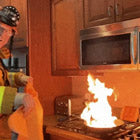 Fire
Fire Safety
Safety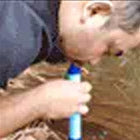 Survival
Survival Protection
Protection New
New
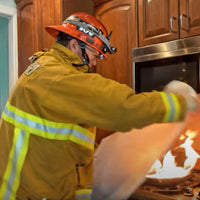 Fire
Fire Safety
Safety Survival
Survival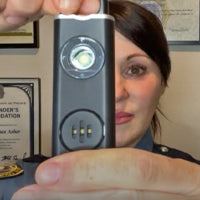 Protection
Protection New
New






